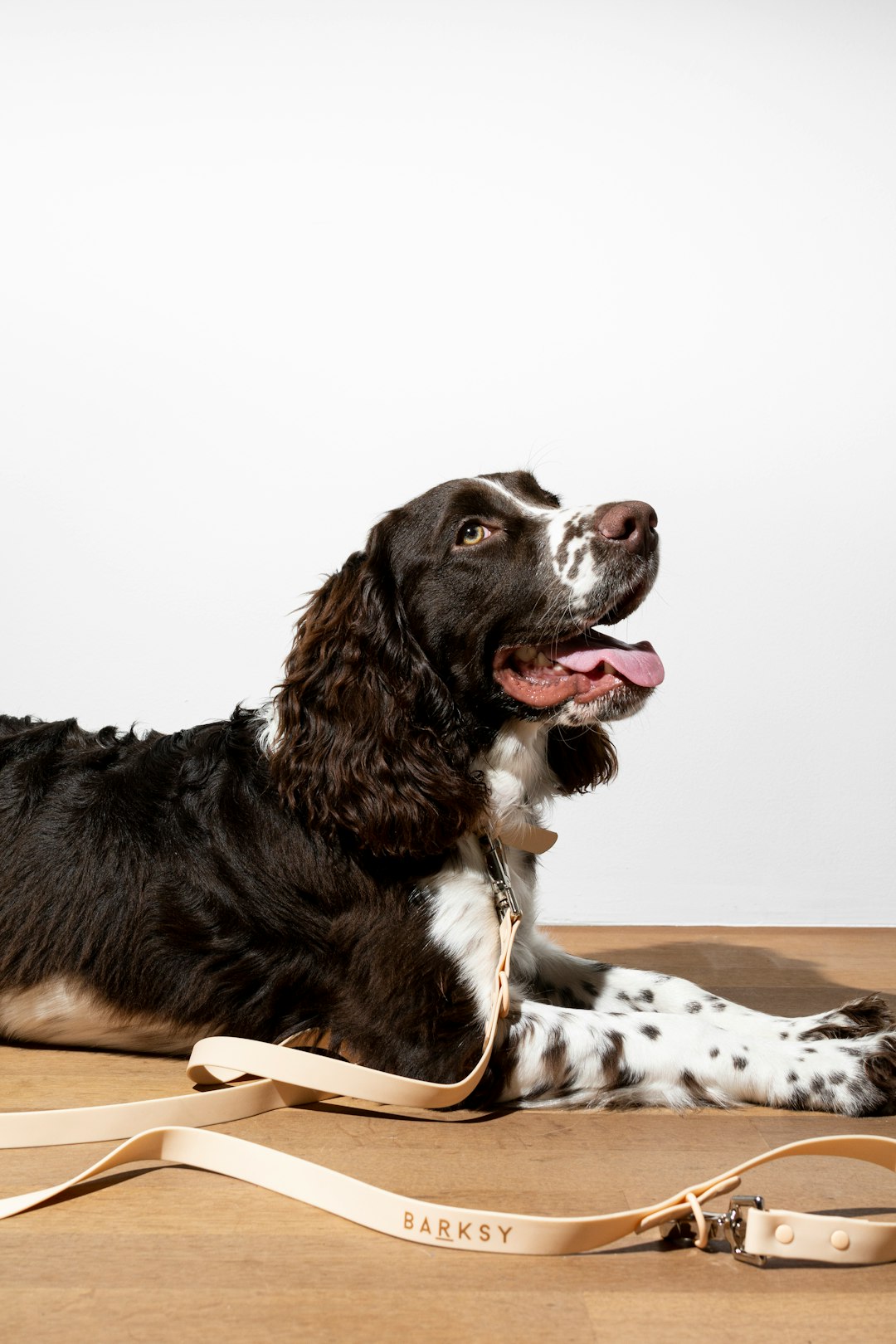In a world where dog owners are increasingly discerning about their pets’ diets, OC Raw Dog Food is gaining traction as a nutritious alternative to conventional kibble. The raw diet movement is not just a fleeting trend; it is transforming the way we think about canine nutrition. With numerous benefits ranging from improved digestion to enhanced coat health, many pet parents are eager to explore the potential advantages of feeding their dogs raw food. In this blog post, we will dive into the science behind raw feeding, how to smoothly transition your furry friend to this new diet, and debunk common myths that may be holding you back. Additionally, we will guide you in choosing the right raw dog food brand, ensuring that your beloved companion receives the best nutrition possible. Join us on this journey to discover why raw diets are taking the dog world by storm!
What is OC Raw Dog Food?
Overview of OC Raw Dog Food
OC Raw dog food is a premium brand that offers a biologically appropriate and nutritionally balanced raw diet for dogs. This approach to canine nutrition emphasizes healthier ingredients sourced from real meat, organs, and bones. The company prioritizes quality by using fresh, high-grade ingredients devoid of fillers, artificial preservatives, and by-products. As raw feeding gains popularity among dog owners, OC Raw provides a convenient and reliable option tailored to meet the needs of various breeds and life stages.
Key Ingredients in Raw Diets
One of the distinctive features of OC’s offerings is their focus on whole foods. The primary ingredients typically include raw muscle meat, organ meats, and bone, ensuring that dogs receive essential nutrients in their natural form. These components contribute important vitamins, minerals, and amino acids necessary for optimal health. Additionally, some formulations may include vegetables and healthy fats for balanced nutrition. By prioritizing freshness and quality, OC Raw dog food aims to promote a vibrant lifestyle, supporting energy levels, digestive health, and overall well-being in canine companions. As a result, many pet owners are choosing this approach to provide their dogs with a rewarding and wholesome dining experience.
Benefits of a Raw Diet for Dogs
Improved Digestion and Nutritional Absorption
One of the standout advantages of a raw diet for dogs is improved digestion and nutritional absorption. Raw diets, such as OC Raw dog food, often consist of high-quality meats, bones, and even fruits and vegetables. This natural composition can lead to a more efficient digestive process. Dogs are more likely to absorb essential nutrients when consuming easily digestible ingredients. Moreover, many dog owners report that their pets experience less gastrointestinal distress, leading to firm stools and reduced gas. This enhancement in digestive health means that your furry friend can benefit from the nutrients necessary for optimal growth and energy levels.
Healthier Skin and Coat
Another compelling benefit of a raw diet is healthier skin and coat. Many pet owners notice a significant transformation in their dog’s coat after transitioning to a raw food diet. This improvement results from the inclusion of natural oils and fats found in raw meat along with omega fatty acids prominent in certain veggies. Thanks to these vital nutrients, your dog may experience reduced itching, minimized allergic reactions, and an overall shinier and healthier coat. Additionally, the nutrient-dense ingredients found in OC Raw dog food can help combat common skin issues, making it a fantastic choice for dogs suffering from dull fur or skin sensitivities.
Switching to a raw diet not only promotes internal health but also enhances the outward appearance of your beloved pet.
Understanding the Science Behind Raw Feeding
Nutritional Needs of Dogs
Dogs are inherently carnivorous animals, and their ancestral diet consisted primarily of meat, bones, and organs. This natural inclination can be linked to their biological makeup, including their digestive systems, which have evolved to process raw proteins efficiently. Raw feeding, such as OC Raw dog food, meets the essential nutritional needs of dogs by delivering high-quality proteins, fats, vitamins, and minerals. For instance, raw meat contains amino acids that promote muscle health, while natural fats supply energy and support skin and coat condition.
Furthermore, raw diets often include raw fruits and vegetables, offering fiber and antioxidants that contribute to overall well-being. Importantly, this balanced approach aligns with a dog’s natural dietary habits, minimizing the risk of obesity and related health issues commonly associated with processed dog food.
Evolutionary Perspective on Canine Diets
To truly appreciate dog nutrition, it’s crucial to consider the evolutionary perspective. Domestic dogs share a close genetic lineage with wolves, who primarily thrive on a raw meat-based diet. This historical connection illustrates the importance of natural feeding practices. When using a raw diet approach like OC Raw dog food, pet owners can better replicate what dogs instinctively consume in the wild.
Moreover, this evolutionary understanding reinforces the idea that processed foods do not adequately mimic the nutritious qualities of raw diets. As more research emerges, the focus on raw feeding is gaining traction as science supports the long-held beliefs of pet owners who prioritize their dogs’ health through natural dietary choices.
How to Transition Your Dog to a Raw Diet
Transitioning your dog to a raw diet requires a thoughtful approach to ensure that your furry friend adapts smoothly and comfortably. Here are essential strategies to facilitate this change effectively.
Steps for a Smooth Transition
Begin gradually: Start by introducing OC Raw dog food into your pet’s current diet. Mix a small amount of the raw food with their usual kibble, gradually increasing the ratio of raw food over a week or two. This slow introduction helps your dog’s digestive system acclimate to the new proteins and nutrients.
Observe your dog’s reaction: It’s crucial to monitor your dog closely during this transition. Look for signs such as changes in stool consistency, energy levels, or any gastrointestinal upset. If your dog shows any adverse reactions, slow down the transition process.
Provide variety: A raw diet can offer various proteins that may benefit your dog. Start with one protein source before expanding to include other meats, organs, and bones. This not only enhances palatability but also ensures a balanced nutrient profile.
Common Pitfalls to Avoid
Rushing the process: It might be tempting to switch your dog to raw food immediately; however, this can lead to gastrointestinal distress. Always prioritize your dog’s comfort by allowing ample time for adjustment.
Ignoring portion sizes: Be mindful of the amount of food your dog consumes. Raw food is typically denser than processed kibble, so adjusting portion sizes is vital to prevent overfeeding or underfeeding.
Neglecting dietary variety: A well-rounded raw diet encompasses more than just meat. Ensure you’re including organs and bones to furnish a complete and balanced nutrition profile. Failure to include diverse sources of nutrients can lead to deficiencies.
By following these guidelines, you will establish a seamless transition to a raw diet, setting the stage for improved health and vitality in your dog.
Debunking Myths About Raw Dog Food
Safety Concerns and Bacterial Risks
One of the most prevalent myths surrounding OC Raw dog food is the assumption that raw diets pose significant health risks due to harmful bacteria. While it is true that raw meat may harbor bacteria such as Salmonella or E. coli, this risk can be mitigated through proper handling and storage practices. When feeding your dog a raw food diet, ensure you purchase high-quality ingredients, store them at the correct temperatures, and follow safe food-handling guidelines. By practicing good hygiene, you significantly reduce the risk of bacterial contamination, making raw feeding much safer than many believe.
Nutritional Myths
Another common misconception is that dogs cannot receive all the necessary nutrients from a raw diet. In reality, a balanced OC Raw dog food diet can provide an abundance of essential vitamins, minerals, and proteins. Raw feeding allows pet owners to customize their dog’s diet according to individual needs, whether they are seeking weight maintenance, improved coat condition, or enhanced energy levels. Research has shown that a variety of raw meats, organs, and appropriate vegetables can supply all the dietary requirements dogs need to thrive. Therefore, it’s essential to base your decision on accurate information rather than outdated myths. Always consult a veterinarian for guidance tailored specifically to your dog’s health needs.
Choosing the Right Raw Dog Food Brand
What to Look for in Quality Brands
When selecting a raw dog food brand, quality should be your utmost priority. Start by examining the ingredient list; it should include whole meats, organ meats, and fresh vegetables, avoiding fillers and artificial preservatives. Moreover, sourcing transparency is crucial. Brands that clearly state where they obtain their ingredients can provide peace of mind regarding the quality and safety of the food. Look for products that adhere to AAFCO (Association of American Feed Control Officials) standards and have undergone rigorous testing to ensure they meet nutritional needs.
Additionally, customer reviews and transparency can be invaluable when making your decision. Brands with positive feedback from satisfied pet owners often indicate a reliable choice. Finally, ensure that the brand offers a variety of proteins and formulas to cater to your dog’s specific dietary requirements and preferences.
Top Recommended Raw Dog Food Products
Several raw dog food brands stand out in the marketplace, offering exceptional quality and recipes tailored for different dog breeds and health needs. Among them, OC Raw Dog Food is recognized for its commitment to fresh, human-grade ingredients that support your dog’s overall health. Other noteworthy mentions include brands like Primal Pet Foods and Stella & Chewy’s, both of which offer diverse protein sources and meticulous ingredient sourcing.
It’s essential to consult with your veterinarian as you explore these options, ensuring that the selected product aligns with your dog’s unique health requirements and preferences. By making informed decisions, you’ll support your beloved canine friend’s health and well-being with the right raw diet tailored just for them.
Frequently Asked Questions
What is a raw dog food diet, and how does it differ from traditional dog food?
A raw dog food diet consists of uncooked meat, bones, fruits, and vegetables, compared to traditional dog food, which is typically processed and includes fillers and artificial ingredients. The raw diet emphasizes fresh, whole foods aimed at mimicking a dog’s ancestral diet. Proponents argue that this diet can lead to better health, improved digestion, and enhanced coat quality, making it a popular choice among dog owners seeking a more natural approach to pet nutrition.
What are the benefits of feeding my dog a raw diet?
Feeding your dog a raw diet can offer numerous benefits, including improved digestion, a shinier coat, and healthier skin. Many dog owners report that their pets have more energy and vitality on a raw diet, along with healthier teeth and gums. Additionally, feeding raw may reduce allergies and food sensitivities, contributing to an overall better quality of life. However, it is essential to consult with a veterinarian to ensure that the diet is balanced and suitable for your dog’s specific needs.
Are there any risks associated with a raw dog food diet?
Yes, there are potential risks associated with a raw dog food diet, including bacterial contamination (such as Salmonella and E. Coli) that can affect both dogs and humans. Additionally, if not prepared correctly, a raw diet may lack essential nutrients, leading to deficiencies. It’s crucial to handle raw food safely, follow proper feeding guidelines, and consult with a veterinarian to create a balanced meal plan that meets your dog’s nutritional requirements to minimize these risks.
How can I transition my dog to a raw food diet safely?
Transitioning your dog to a raw food diet should be done gradually to avoid digestive upset. Start by mixing a small amount of raw food with their current diet, gradually increasing the proportion of raw food over a week or two. Monitor your dog’s reaction to the new diet, and consult a veterinarian for advice during the transition. Observing your dog’s stool consistency and overall health can provide insights into how well they are adapting to the raw diet.



